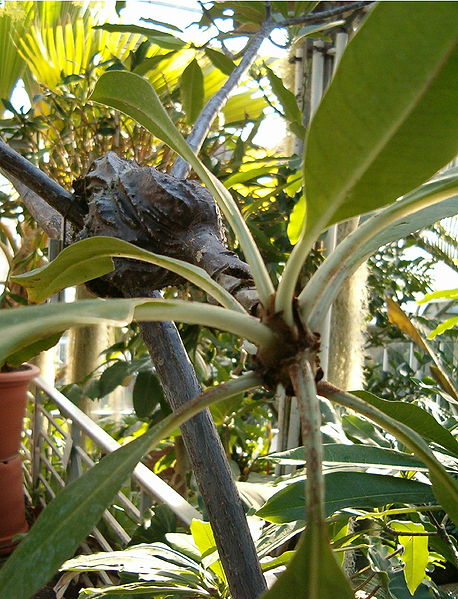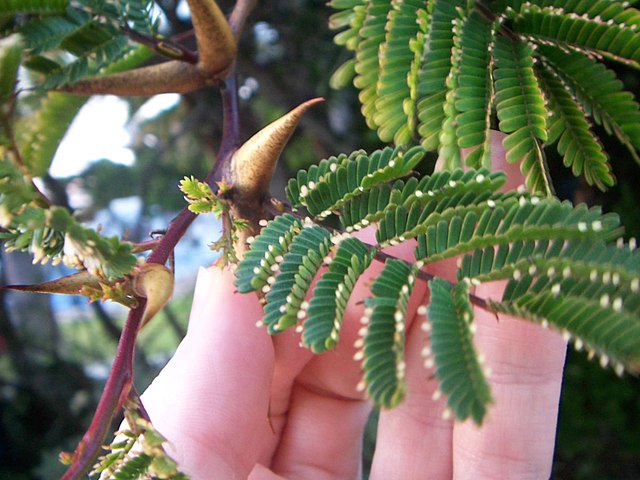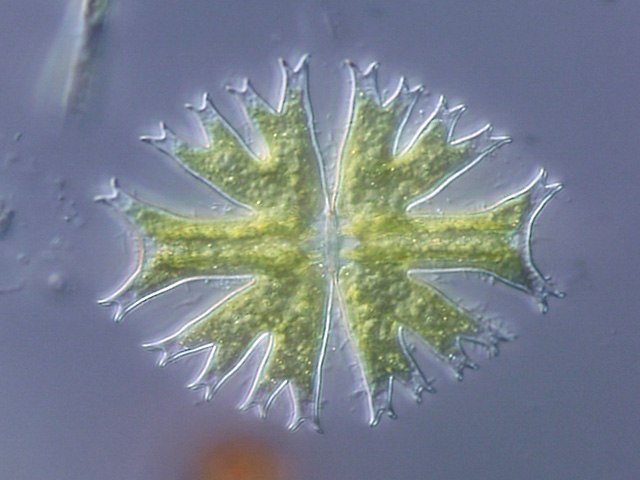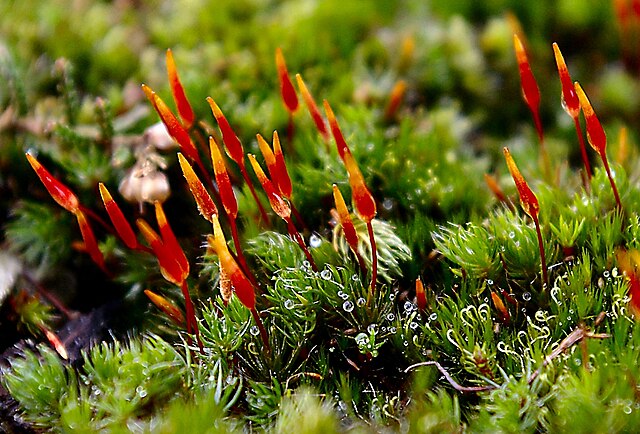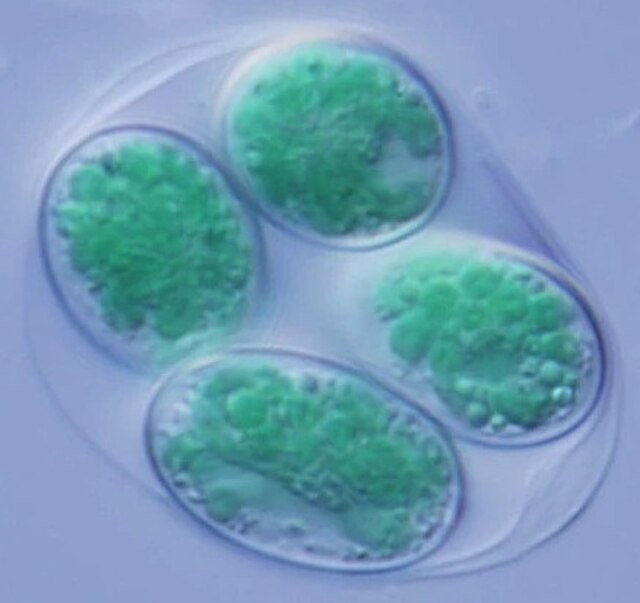Myrmecophytes are plants that live in a mutualistic association with a colony of ants. There are over 100 different genera of myrmecophytes. These plants possess structural adaptations that provide ants with food and/or shelter. These specialized structures include domatia, food bodies, and extrafloral nectaries. In exchange for food and shelter, ants aid the myrmecophyte in pollination, seed dispersal, gathering of essential nutrients, and/or defense. Specifically, domatia adapted to ants may be called myrmecodomatia.
Acacia ants
Ants nesting in Macaranga bancana stem
Tuber on Myrmecodia tuberosa
Enlarged thorns and beltian bodies on Acacia
Plants are the eukaryotes that form the kingdom Plantae; they are predominantly photosynthetic. This means that they obtain their energy from sunlight, using chloroplasts derived from endosymbiosis with cyanobacteria to produce sugars from carbon dioxide and water, using the green pigment chlorophyll. Exceptions are parasitic plants that have lost the genes for chlorophyll and photosynthesis, and obtain their energy from other plants or fungi.
Image: Frühling blühender Kirschenbaum
Image: Micrasterias radiata
Image: Red Moss
Image: Glaucocystis nostochinearum



